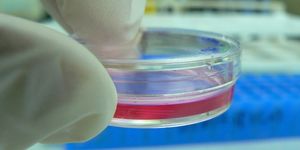Super-Enhancers Implicated in Autoimmune Disease
Regulatory T cells (Tregs) step in to mute the immune system after it has mounted a response against whatever foreign invader is tormenting the body. An immune attack is necessary to keep the body protected from invaders, but at a certain point Tregs ensure that the immune system does not go overboard and hurt healthy human cells, causing autoimmune disease.
The current study from the Immunology Frontier Research Center (IFReC) at Osaka University in Japan thusly focused on the origin of Tregs, of the precursor cells that are destined to become the specialized T cells that prevent autoimmune reactions.
They found that Treg development, which occurs in the thymus, is controlled by the establishment of super-enhancers, regulators of gene expression that appear to also be involved in Treg development. “Super-enhancers appeared to be a pre-requisite for Treg cell development, so we sought molecules controlling super-enhancers,” explained IFReC professor Shimon Sakaguchi.
They found that the molecular mechanism behind Treg malfunction, which causes autoimmune diseases, was a protein called Satb1, which the observed as a regulator of the super-enhancers essential for Treg cell development.
Satb1 levels are inherently highest just before Tregs develop, and there is a sudden reduction right after they eventually develop. This connection is due to the bond between Satb1 and the super-enhancers responsible for Treg development, researchers found, but Satb1 is not bound to the Tregs themselves.
“Satb1 appears to be necessary for the differentiation of Treg cells but not for the maintenance of Treg cells,” explained first author Dr. Yohko Kitagawa.
During their study, mutant mice lacking Satb1 showed impaired Treg development and signs of autoimmune disease. Additionally, Treg progenitor cells exhibited inferior super enhancer activity, leading to a reduction in expression of vital genes for Treg development.
Ultimately, Sakaguchi, Kitagawa, and the rest of the research team concluded that a lack of ample Satb1-dependent super-enhancers could be causing autoimmune diseases and allergies in some people, a result that leaves room for future research into Satb1 as a target for treating these conditions.
The current study was recently published in the journal Nature Immunology.
Sources: Osaka University, Immunology Frontier Research Center, Nature Genetics









